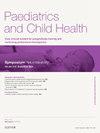The changing landscape of eating disorders in children: a guide to understanding, diagnosis and management
Q3 Medicine
引用次数: 0
Abstract
Eating disorders are common and the incidence has risen significantly over recent years, particularly in children and young people. However, there is less familiarity with and understanding of their management than other common long-term illnesses. The consequences of having an eating disorder can be devastating and can affect all aspects of a young person's life as well as those around them. However, as mental health services are struggling to cope with the increased demand, there is a higher threshold to access specialist services and long waiting lists. It is therefore more likely that children and young people will present to primary care or paediatricians with disordered eating or the medical complications. This article provides guidance on how to assess a young person who presents acutely with an eating disorder or the features suggestive of one, focusing on how to assess risk and the potential for medical complication.
儿童饮食失调的变化:理解、诊断和管理指南
饮食失调很常见,近年来发病率显著上升,特别是在儿童和年轻人中。然而,与其他常见的长期疾病相比,人们对其管理的熟悉和理解较少。饮食失调的后果可能是毁灭性的,会影响年轻人生活的方方面面,也会影响他们周围的人。然而,由于心理健康服务正在努力应对日益增长的需求,获得专家服务的门槛更高,等候名单也很长。因此,儿童和年轻人更有可能向初级保健或儿科医生提出饮食失调或医学并发症。本文提供了如何评估急性饮食失调或暗示饮食失调特征的年轻人的指导,重点是如何评估风险和潜在的医疗并发症。
本文章由计算机程序翻译,如有差异,请以英文原文为准。
求助全文
约1分钟内获得全文
求助全文
来源期刊

Paediatrics and Child Health (United Kingdom)
Medicine-Pediatrics, Perinatology and Child Health
CiteScore
1.20
自引率
0.00%
发文量
70
 求助内容:
求助内容: 应助结果提醒方式:
应助结果提醒方式:


